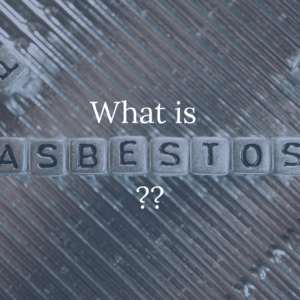Once hailed as the most extraordinary fire-proofing material ever made, asbestos is known to be a dangerous carcinogen.
Used in everything from mattresses to popcorn ceilings, asbestos has had a wide array of applications. It was touted as a miracle material, but there were early clues of its insidious health effects when the first documented death from asbestos exposure occurred in Great Britain in 1899. Word spread slowly but steadily, and by 1918, asbestos was a confirmed health hazard in the United States.
Though asbestos companies had prior knowledge of the material’s tendency to adversely affect the lungs, it wasn’t until 1950 that the risk of lung cancer became a publicly known side effect. Further, the link between asbestos and mesothelioma was first published in 1960.
What is Asbestos Made Of?
Asbestos is the name for six naturally occurring fibrous minerals found in certain rock formations, mined from open-pit mines. The term originates from ancient Greek, and it translates to “inextinguishable.”

The six different mineral names are:
- Chrysotile
- Crocidolite
- Amosite
- Anthophyllite
- Tremolite
- Actinolite
Each of these minerals forms crystals in the same types of formations, which are long and thin flexible fibers.
The fibers are lightweight, strong, and resistant to heat, which made asbestos a popular material for all sorts of commercial and industrial applications. Modern society didn’t discover asbestos, however. Ancient Scandinavian civilizations first used asbestos in pottery because they found that they could make larger pots that were much lighter than other materials and could withstand heat for cooking and transporting hot metals.
The knowledge about this material was passed on through generations and across the world. The ancient Greeks used asbestos in cloth, and they were among the first to notice a “sickness of the lungs” in the workers who wove the asbestos-laden fabric.
Why Asbestos is So Dangerous
The exact number behind asbestos-related deaths is difficult to pinpoint, but it’s believed that the material kills up to 15,000 people per year in the United States alone.
Unfortunately, when we breathe in these fibers, they act like sharp shards that damage the lungs over time. In addition to damaging the lining of the lungs, some forms of asbestos contain iron, which reacts with oxygen to damage your lung cells’ DNA. When this genetic damage occurs, the cells divide too quickly, leading to tumors.
As you can imagine, increased exposure leads to an increased likelihood of contracting an asbestos-related illness, such as Mesothelioma and lung cancer. A person employed in an asbestos-rich environment faces monumental risk.
Despite these known risks in the prior decades, asbestos continued to be a popular material in the United States because it was strong, inexpensive, and resisted heat and chemicals. Naval ships used asbestos extensively during wars, and the material was a prominent feature in residential and commercial floor tiles, shingles, cement, and insulation.
There are current efforts to rid the United States of asbestos, but removal procedures are risky. Even more troublesome is that the use of asbestos is not currently banned in the United States.
As a result, asbestos is still being used, and it’s estimated to be present in 30 million American homes. You can even find it present in a variety of consumer products such as makeup and even children’s toys.
What to Do If You’ve Been Exposed to Asbestos
Long-term and prolonged exposure in a military, construction, or manufacturing setting can lead to an asbestos-related illness. Compensation may be available from the asbestos manufacturer, and settlements tend to average between $1 million and $2.4 million.
For over 35 years, Pennsylvania mesothelioma attorney Dave Halpern has been fighting for the rights of asbestos lung cancer and mesothelioma victims. To discuss your case, please don’t hesitate to get in touch with the Halpern Law Firm at (800) 505-6500 or reach out to us through our contact form for a free consultation.
